Abralia omiae
Richard E. YoungIntroduction
Abralia omiae is a member of the subgenus Pygmabralia. It is a small species with maximum size, apparently, less than 30 mm ML. Little is known of its general biology. It is very similar to the sympatric A. similis but, apparently, separable by the photophore pattern on the mantle and head and slight differences in the position of the lobes of the hectocotylus.
Brief diagnosis:
An Abralia (Pygmabralia) found in the Pacific Ocean and with ...
- large integumentary photophores on ventral mantle in three recognizable rows on either side of midventral "bare" strip.
- small photophores around mesial rows of large photophores together form two broad longitudinal bands.
- a monoserial row of photophores recognizable in the ventral midline of the head.
- proximal, bilobed ventral membrane of hectocotylus located close to dorsal edge of oral surface of arm.
Characteristics
- Arms
- Arms with 6-13 hooks and distal suckers.
- Hectocotylus
- Right arm IV hectocotylized.
- 6-8 hooks proxmal to lobes, remainder of arm without armature.
- Ventral margin with large strongly bilobed proximal lobe followed by distinct, small, short lobe on dorsal margin but proximal lobes superficially appear to be along the dorsal margin.
- Ventral protective membrane forms low semilunar membrane at distal end of arm.
- Arms with 6-13 hooks and distal suckers.
- Tentacles
- Tentacular club with 1 or 2 hooks, ventral flap and dorsal keel.
- Tentacular club with 1 or 2 hooks, ventral flap and dorsal keel.
- Mantle
- Mantle with blunt, short tail, 7-10% of ML.
- Mantle with blunt, short tail, 7-10% of ML.
- Photophores
- Occular photophores: 5 photophores with terminal and middle largest; monotypic structure.
- Integumental photophores of mantle
- Large photophores on mantle in six, ill defined, longitudinal rows but combined with small photophores form two broad longitudinal bands. About 400 small and 64 large photophores on ventral mantle.
- Midventral strip without photophores.
- Integumental photophores of funnel
- Two medial broad bands of photophores, longitudinal row of 4 photophores on each side.
- Two medial broad bands of photophores, longitudinal row of 4 photophores on each side.
- Integumental photophores of head
- 20-24 large and about 150 small photophore in near-bilateral symmetry.
- Monoserial row recognizable in midline; medial band on either side; row of small photophores on ventral half of eyelid; semicirclar row of small photophores, broken by a gap in the center, between eyelid and medial band of photophores.
- Integumental photophores of arms
- Arm III with 2 longitudinal rows of photophores; each with 3-4 small dark photophores and one large white photophore at arm base.
- Arm II with one, small photophore at dorsal arm base.
- Occular photophores: 5 photophores with terminal and middle largest; monotypic structure.
- Epidermis
- Thick, fragile, and gelatinous.
Comments
The above description is taken from Hidata and Kubodera (2000).
References
Hidaka, K. and T. Kubodera. 2000. Squids of the genus Abralia (Cephalopoda: Enoploteuthidae) from the western tropical Pacific with a description of Abralia omiae, a new species. Bulletin of Marine Science, 66(2):417-443.
Title Illustrations

| Scientific Name | Abralia omiae |
|---|---|
| Location | Equatorial Pacific at 5°N, 155°E |
| Reference | Hidaka, K. and T. Kubodera. 2000. Squids of the genus Abralia (Cephalopoda: Enoploteuthidae) from the western tropical Pacific with a description of Abralia omiae, a new species. Bulletin of Marine Science, 66(2):417-443. |
| Sex | Female |
| View | Ventral |
| Size | 27 mm ML |
| Type | Holotype |
| Copyright | © 2000 Bulletin of Marine Science |
About This Page
Drawings from Hidaka and Kubodera (2000) printed with the Permission of the Bulletin of Marine Science.

University of Hawaii, Honolulu, HI, USA
Page copyright © 2018
 Page: Tree of Life
Abralia omiae .
Authored by
Richard E. Young.
The TEXT of this page is licensed under the
Creative Commons Attribution-NonCommercial License - Version 3.0. Note that images and other media
featured on this page are each governed by their own license, and they may or may not be available
for reuse. Click on an image or a media link to access the media data window, which provides the
relevant licensing information. For the general terms and conditions of ToL material reuse and
redistribution, please see the Tree of Life Copyright
Policies.
Page: Tree of Life
Abralia omiae .
Authored by
Richard E. Young.
The TEXT of this page is licensed under the
Creative Commons Attribution-NonCommercial License - Version 3.0. Note that images and other media
featured on this page are each governed by their own license, and they may or may not be available
for reuse. Click on an image or a media link to access the media data window, which provides the
relevant licensing information. For the general terms and conditions of ToL material reuse and
redistribution, please see the Tree of Life Copyright
Policies.
- First online 26 July 2009
- Content changed 26 July 2009
Citing this page:
Young, Richard E. 2009. Abralia omiae . Version 26 July 2009 (under construction). http://tolweb.org/Abralia_omiae/138446/2009.07.26 in The Tree of Life Web Project, http://tolweb.org/




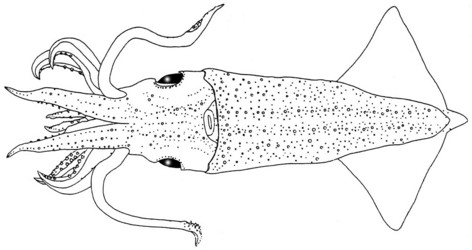
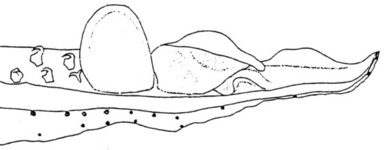
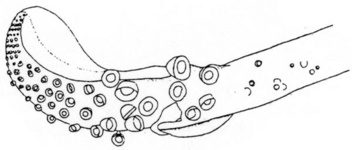
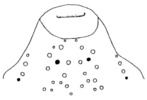
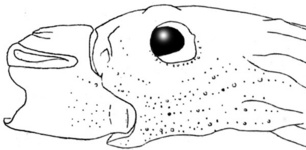
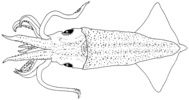


 Go to quick links
Go to quick search
Go to navigation for this section of the ToL site
Go to detailed links for the ToL site
Go to quick links
Go to quick search
Go to navigation for this section of the ToL site
Go to detailed links for the ToL site